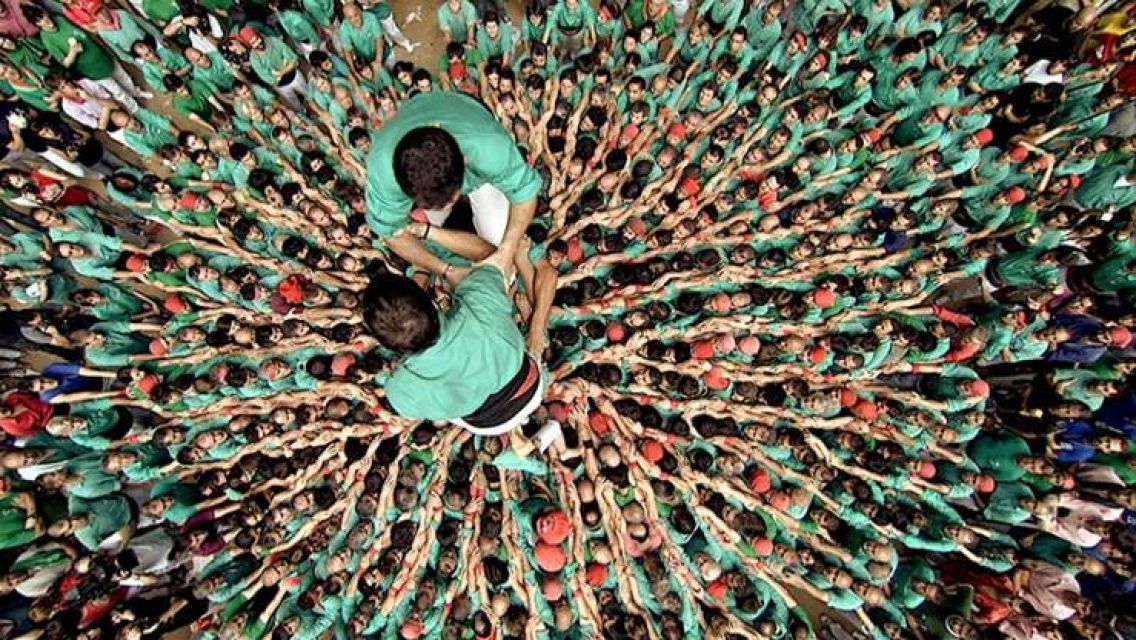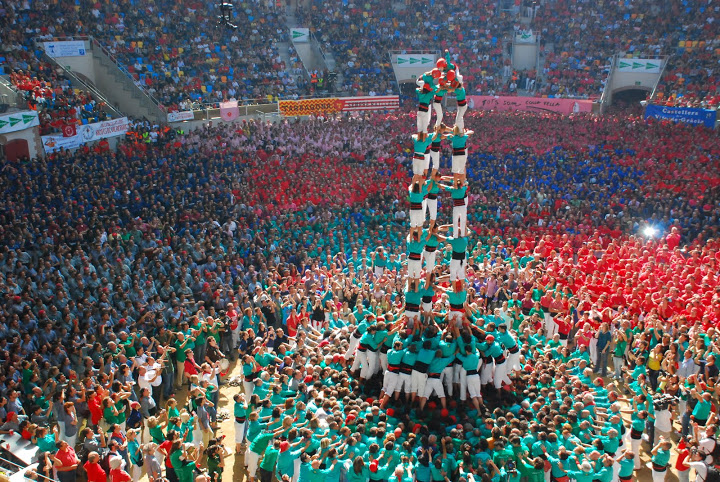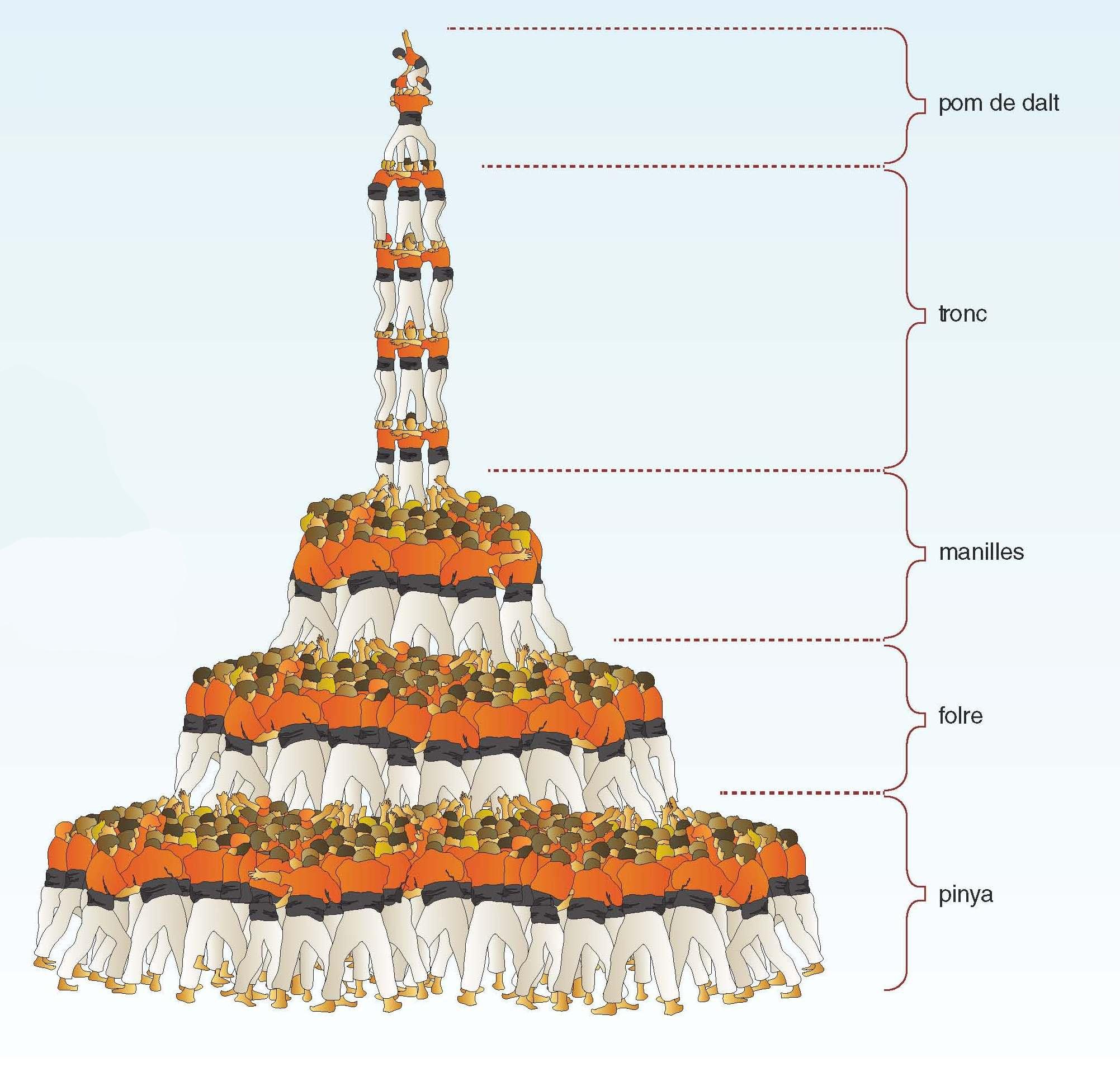
On the 1st of October this year, the first Saturday of the month, the biennial “Concurs de Castells” in Tarragona was celebrated. No less than 32 teams compete to build the highest human tower.
Some teams include up to 500 members who climb on top of each other to build a human pyramid. The previous edition year saw the first ever ten-tier pyramid in a competition. But it is not the men who need to be brave here, but the children, who have to climb to the pinnacle of the tower, often as young as five years. However, they wear foam helmets to protect them from injury. Nonetheless, if it was my child up there I would still be terrified.

Now we also see foreign teams entering the competition. "Els Xiquets de Hangzhou", from China came in second place in the previous edition and is now getting more global coverage for this unusual event in other areas of the world.
Nearly 6.000 spectators enjoyed the most important tower-building event. The Human Tower Competition is a first-class event and a magnificent opportunity to enjoy human tower building, an example of Catalan culture declared Cultural and Intangible Heritage of Humanity by UNESCO.
How does it work?
Castells –a Catalonian word that means castles– are a cultural phenomenon particular to Catalonia and consist of erecting human towers. This tradition originated at the end of the 18th century in Valls, Tarragona, when rival groups of people called colles, began to compete in constructing the different kinds of human towers that we recognise nowadays.
There are three definite parts to a castle; the pinya or base the tronc or trunk and the pom de dalt or the crown of the castle.
 The pinya is the horizontal base of the construction on which all the accumulated weight rests and is used to stabilise and strengthen the erected structure, as well as softening or breaking the falls if any should occur.
The pinya is the horizontal base of the construction on which all the accumulated weight rests and is used to stabilise and strengthen the erected structure, as well as softening or breaking the falls if any should occur.
This vertical structure is the trunk and consists of a certain number of people on each store, varying from 1 to 9 people depending on the castle and this also gives us the name of the castle.
At the very top of the castle are the canalla (which means youngsters), and they make up the pom de dalt, the crown of the castle, and because they are more agile and light-footed they are the ones in charge of climbing to the very top. One or two supporting structures can be built on top of the pinya if the castle is very high. The one directly on top of the pinya is called the folre and the one on top of that is the manilles. So the folre is at the second level and the manilles at third level height with respect to the ground. Every person who takes part in the building is called a casteller –castle-maker–.
The towers or castles are erected following very precise techniques and every castle is a law unto itself because of the different factors to be taken into account. As a rule, the pinya is formed first of all, this involves a very strict order and discipline, with everybody having an allotted station within the base group. Thereafter the different storeys begin to rise up. The strongest people at the bottom on top of the pinya and the most agile and lightest on the top storeys. The last person to climb the whole tower or castle is the anxaneta, a young girl or boy who, on arriving at the very summit raises his/her arm and salutes the public. This is the highlight of the event as the castell is considered to be crowned. But in fact, the job is only half done the structure still has to be brought down safely. The erection of human castles has different variants, some are with the pinya with folre and manilles, others with different trunk formations or where the castle is erected from top to bottom, this is done by brute force lifting the canalla up first and then the other storeys below them successively.